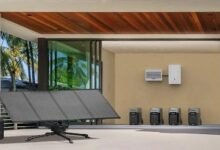When it comes to accurate control of automation, robots, and electronics, Stepper Motors stands out as one of the most reliable options. From 3D printers to CNC machines, these engines operate countless applications where accuracy, repetition and control are necessary. However, choosing the driver of the right for your project can be difficult if you are not aware of its specifications, types and applications.
This guide will help you understand Stepper Motors in detail and give you practical steps to determine the perfect version of your project.
What are Stepper engines?
The function of the other is an electromechanical device that converts electrical impulses into a precise mechanical movement. Unlike traditional DC engines, which are constantly rotating when running, The running engines Recycling in fixed steps. Each pulse transmits the column at a certain angle, giving you careful control of speed, position and direction.
Because of this precise control, the walking engines are widely used in:
- Robots
- CNC machines
- 3D printers
- Medical devices
- Camera platforms
- Mechanical machines
Types of the running engines
Before choosing the right -wing engine, it is important to understand the different types available:
1. Pennicious magnet (PM) Plain engines
These engines use a permanent magnet dizziness and are ideal for low -speed applications. It is simple and effective and is usually used in small devices such as printers and playing.
2. The frequency variable (VR) is the running engines
VR Stepper Motors has a soft iron dizziness and there is no permanent magnet. It is inexpensive, but it provides less torque compared to other types.
3. Hybrid Stepper Motors
The hybrid engines combine the best features of PM and VR designs. It provides high torque, excellent accuracy, which is the most widely used plains in industrial applications.
The main factors to consider when choosing the other engines
The choice of the correct engine depends on several factors. Below are the most important considerations:
1. Requirement of torque
One of the first things to be determined is the torque you need. The functions of the other are available in different torque categories, and are usually measured in Newton Mit (NM) or Oz-In. If your application includes heavy loads, such as CNC grinding, you will need a higher torque engine. For lightweight applications such as camera slippage, a low torque might be sufficient.
2. The angle of step and decision
The step corner determines the amount of the engine column for each pulse. Common step angles are 1.8 degrees (200 steps per revolution) or 0.9 degrees (400 steps per revolution). The smaller step corners mean more accuracy and smoother movement. For applications that require very good movement, such as 3D printing, the engine that has a perfect small step corner.
3. Speed and acceleration
While Stepper engines excel in Precision, they are not designed for very high speeds. Select your project speed before choosing a engine. High -speed applications may require a balance between torque and acceleration capacity.
4. Current effort and evaluation
Each engine of the walk has a specific effort and current requirements. Ensure that the engine matches your driver and power source. Using a wrong voltage or current can lead to high temperature, weak performance, or even permanent damage.
5. Size and installation
The engines of the other come in unified sizes known as the NEMA (the National Association of Electricity Manufacturers), such as NEMA 17, NEMA 23 and NEMA 34. For example:
- Nima 17: Common in 3D printers and small robots.
- Nima 23Suitable for CNC routers and medium machines.
- Nima 34: The best for hard industrial applications.
Ensure that the engine you choose suit the material restrictions of your project.
6. The driver agrees
The engine of the rest of the pulses control driver requires. Ensure that the operating program determined by the voltage capabilities, current and microecuk. Microsteping allows a smoother movement by dividing full steps into smaller increases.
7. Environmental conditions
Consider where the engine will work. High humidity, dust, or maximum temperatures can affect performance. In harsh environments, you may need a motor with a protective seal or additional cooling mechanisms.
Applications of the walking engines
Understanding common applications can help you choose the right engine:
- 3D printers – NEMA 17 Stepper Motors is often used for a high -resolution design and pressure.
- CNC machines Usually depend on NEMA 23 Stepper Motors Or NEMA 34 Top torque engines.
- Robots He prefers lightweight engines for automatic weapons and mobile robots.
- Medical equipment – It is used for pumps, scanners, and GPS systems that require accuracy.
- Camera systems – The small engines allow smooth models and a tendency to photograph.
Tips for choosing the perfect turn
- Start with your application needs Determine the torque, speed and accuracy.
- Check the compatibility with your driver and your power source Ensure the appropriate effort and current evaluation.
- Consider the ability to expand in the future – If you plan to upgrade your project, choose an additional torque engine.
- Test before completion Initial models help confirm whether the specified driver meets expectations.
Common mistakes to avoid
- Performing torque needs – The choice of a smaller motor can cause skipping and poor performance steps.
- Ignore the driver’s compatibility The incompatibility between the driver and the engine can reduce efficiency.
- It overlooks environmental factors Dust, heat, or vibration can harm the motors of the walk if they are not considered.
- Focus only on the price While the budget is important, reliability and long -term performance must come first.
The future of the plains engines
With the appearance of automation, smart manufacturing, and robots, steppper engines became more advanced. Features such as closed loop control (combining the motors and encryption) make them more efficient and reliable. This trend guarantees that Stepper engines remain essential components in future technologies.
خاتمة
The choice of the right -wing engine requires the torque of your project, speed, accuracy and conditions of the environment. By evaluating the specifications and application needs, you can choose an engine that guarantees reliable performance and long -term efficiency.
Whether you are building a 3D printer, a CNC router, or an automatic system, the right -wing engine can make a difference between the project that is struggling and success.





